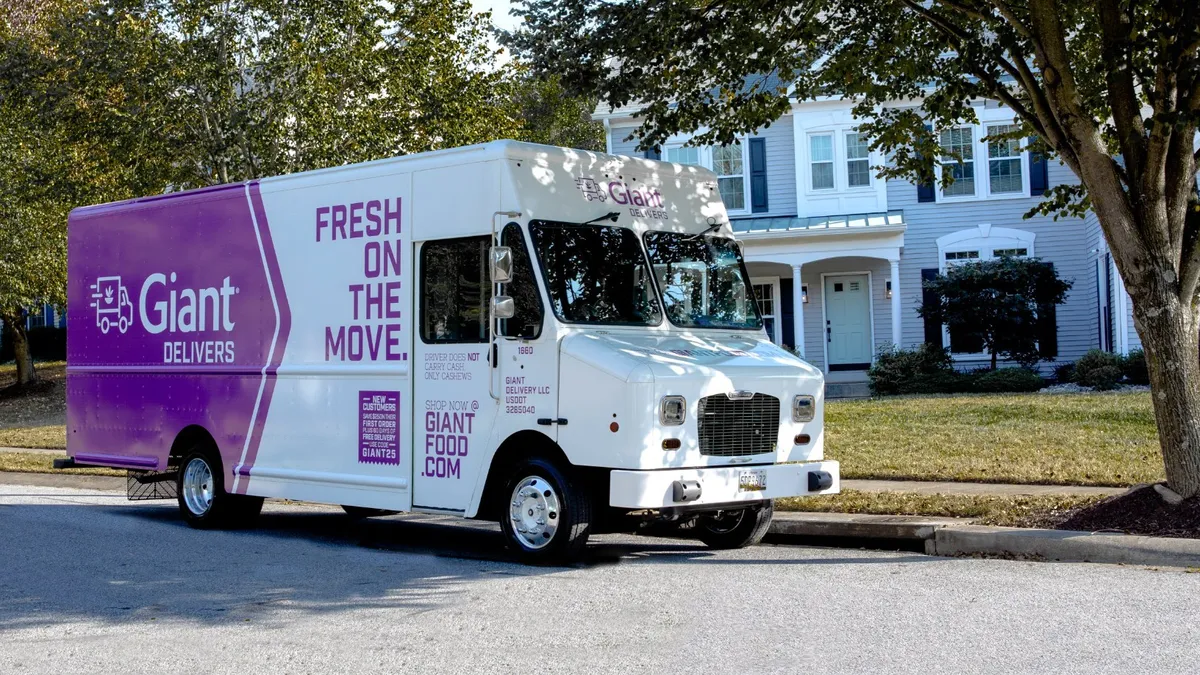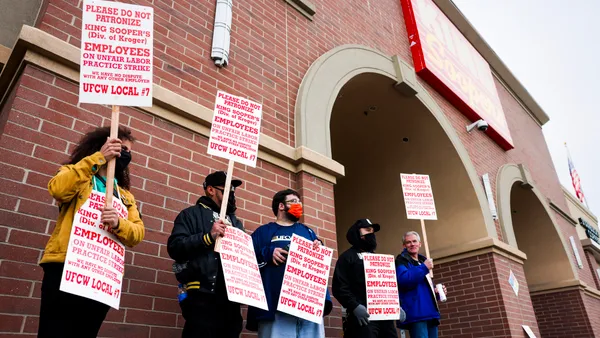Dive Brief:
- Online sales growth, improving results from Stop & Shop stores and continued strong performance from Food Lion and Hannaford drove better-than-expected results for Ahold Delhaize in Q4 2019, according to a company release.
- Ahold Delhaize’s U.S. business grew comparable store sales by 2.3% while online grocery sales grew by nearly 43% during the quarter. The company cited the growth of its click-and-collect services, now available at 693 stores, as a driver of online growth, and maintained its goal of increasing e-commerce sales by 30% or more in 2020.
- Overall, Ahold Delhaize reported earnings of $593.7 million and net sales up 3.1% to $18.9 billion for the fourth financial quarter of 2019. Both figures beat Wall Street estimates.
Dive Insight:
Ahold Delhaize’s strong Q4 showing further supports its focus on bricks-and-clicks retailing, including its decision this week to withdraw its Peapod e-grocery business from the Midwest.
In a conference call with analysts on Wednesday, president and CEO Frans Muller said the company has succeeded in using its stores as the foundation for its online business. As Ahold Delhaize moves forward, it aims to offer more and more shoppers the option of delivery, pickup or in-store shopping. The company noted currently 86% of Ahold Delhaize’s U.S. customers have access to online ordering through delivery or click and collect, or both.
By pulling Peapod out of the Midwest, it limits its vulnerabilities in a three-state market where it didn’t have those stores to rely upon.
“It’s a market where we don’t have a leading store base, which is crucial to executing our omnichannel strategy,” Muller said.
In an email to Grocery Dive, Morningstar analyst Ioannis Pontikis said the move makes sense from both a strategic and a cost perspective.
“The group would prefer to involve its massive store estate in the growing online game, leveraging fixed costs and saving last mile delivery costs by being closer to the end customer,” he said.
Ahold Delhaize doubled its number of click-and-collect locations in 2019 and plans a similar expansion this year, with more than 300 new locations expected to come online. The rollout reflects consumers’ increasing comfort with store pickup, not to mention the lower cost to the retailer to build out and maintain the service.
Officials noted Stop & Shop comparable sales remained negative, but said results from the banner’s stores in Connecticut and Long Island were in line with expectations. Launched in 2018, the “Reimagine Stop & Shop” campaign has built wider aisles, expanded fresh departments and new meal stations inside stores. Muller said the company plans to expand remodels to 65 locations in 2020.
As it updates its store and online operations, Ahold Delhaize is also investing in new technology that promises to boost efficiency and open up new markets. It’s testing checkout-free stores in both Europe and at its U.S. headquarters, which it could eventually license to other companies. It’s also testing online micro-fulfillment at a Stop & Shop store in Hartford, Connecticut, and has said it plans to open more of the small, automated locations this year.
In a note to investors, analysts at R5 Capital said Ahold Delhaize is outperforming other conventional retailers, calling it “the best house on a very bad block.” But they said competition and online investments will continue to challenge margins, noting a slight decline in the metric in Q4 for Ahold Delhaize’s U.S. business.
“The decline in U.S. margins in large part due to the challenges at its biggest U.S. banner, Stop & Shop, is a cautionary sign that the operating climate in the U.S. is likely to get more difficult over the next few years,” the R5 analysts wrote.













